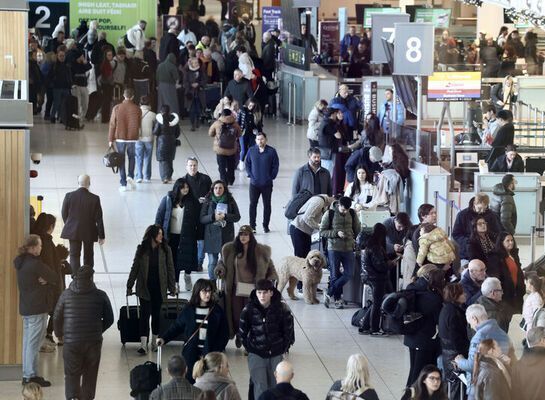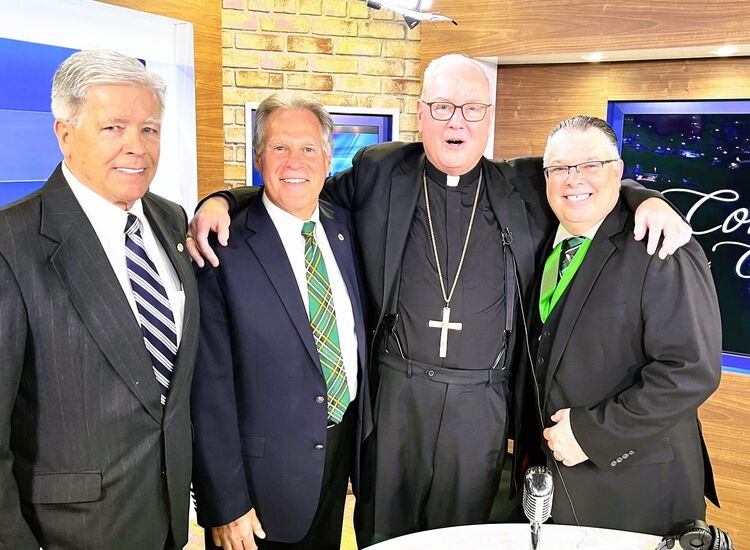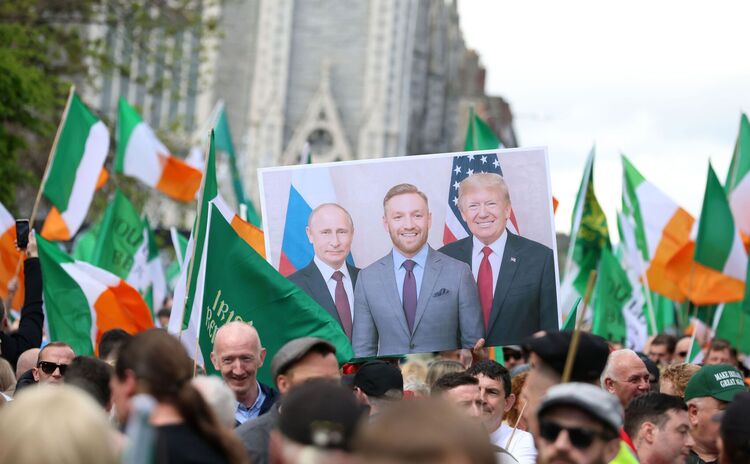Panel from Loos Memorial showing names of John Kirwan (lower right) and John Kipling (upper left).
CENTENARYNEWS.COM
By Patricia Phelan
In a recent Irish Echo, columnist Larry Kirwan wrote about his great-uncle John Kirwan, a native of County Wexford, who was killed in France in the Battle of Loos in 1915. According to Larry, “He’s buried somewhere over there—another undistinguished pawn in the ‘great game.’”
As a professional genealogist, I wondered whether I might be able to find for Larry the “somewhere” where his great-uncle rests. So I went to the website of the Commonwealth War Graves Commission at www.cwgc.org.
Founded in 1917, the CWGC honors the 1.7 million members of British Commonwealth forces who lost their lives in the world wars, and ensures that they will be remembered. The commission builds and maintains cemeteries and memorials in over 150 countries and territories and preserves relevant records and archives. Over the years, I have visited many British war cemeteries and monuments in France and Belgium; beautifully landscaped, with little gardens planted along each row of headstones, it is obvious they are maintained with great care and reverence.
Searching the CWGC’s database of war casualties, I discovered that Private John T. Kirwan served in the Irish Guards, Second Battalion. The son of John T. and Eliza T. Kirwan of John’s Street, Wexford, he was 22 when he died at Loos on Sept. 30, 1915.
Along with more than 20,000 other men who went missing in action near Loos, John Kirwan sadly has no known grave. But he has not been forgotten. “J. T. Kirwan” is commemorated, along with other Irish Guards whose bodies were never found, on panels 9-10 of the Loos Memorial in Dud Corner Cemetery in Pas de Calais, France.
Named on the same panels as young Kirwan is John Kipling, 18-year-old son of Rudyard Kipling. John Kipling was too nearsighted to pass the eye test necessary for army service, but his father nevertheless managed to get his son a commission as a lieutenant in the Irish Guards.
At the Battle of Loos, Kipling led a platoon of the Second Battalion, the battalion in which John Kirwan served; whether Kirwan belonged to this particular platoon is not known. Kipling was killed three days before Kirwan, on Sept. 27, 1915.

Infantry advancing through poison gas on
Sept. 25, 1915, the first day of the Battle of Loos.
What role Kipling’s poor vision played in his own death or that of his comrades is a matter for conjecture, but it seems obvious he should not have been leading men into battle. Kipling’s body was recovered in 1919, but he was not positively identified until many decades later, and so his name was included on the wall of the missing.
Inscribed on the Loos Memorial are these words: “To the glory of God and in memory of 20,598 officers and men of the forces of the British Empire who fell in the Battles of Loos and Béthune and other actions in this neighbourhood, whose names are here recorded but to whom the fortunes of war denied the known and honoured burial given to their comrades in death.”
Larry’s great-uncle John Kirwan may have been an “undistinguished pawn,” but his military service and his death in wartime will be honored in perpetuity.
Patricia Phelan is a professional genealogist. She can be contacted at glanvil3@aol.com.








